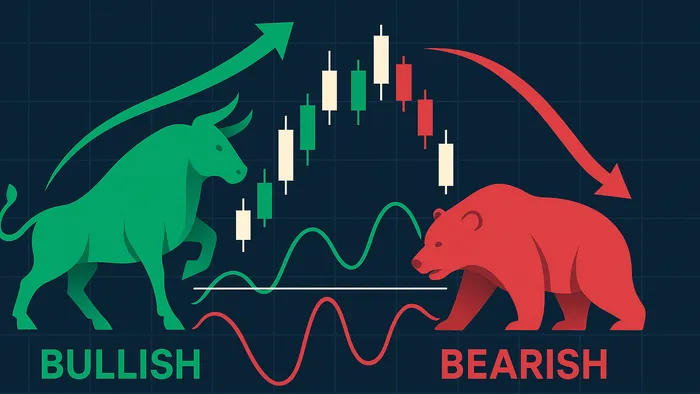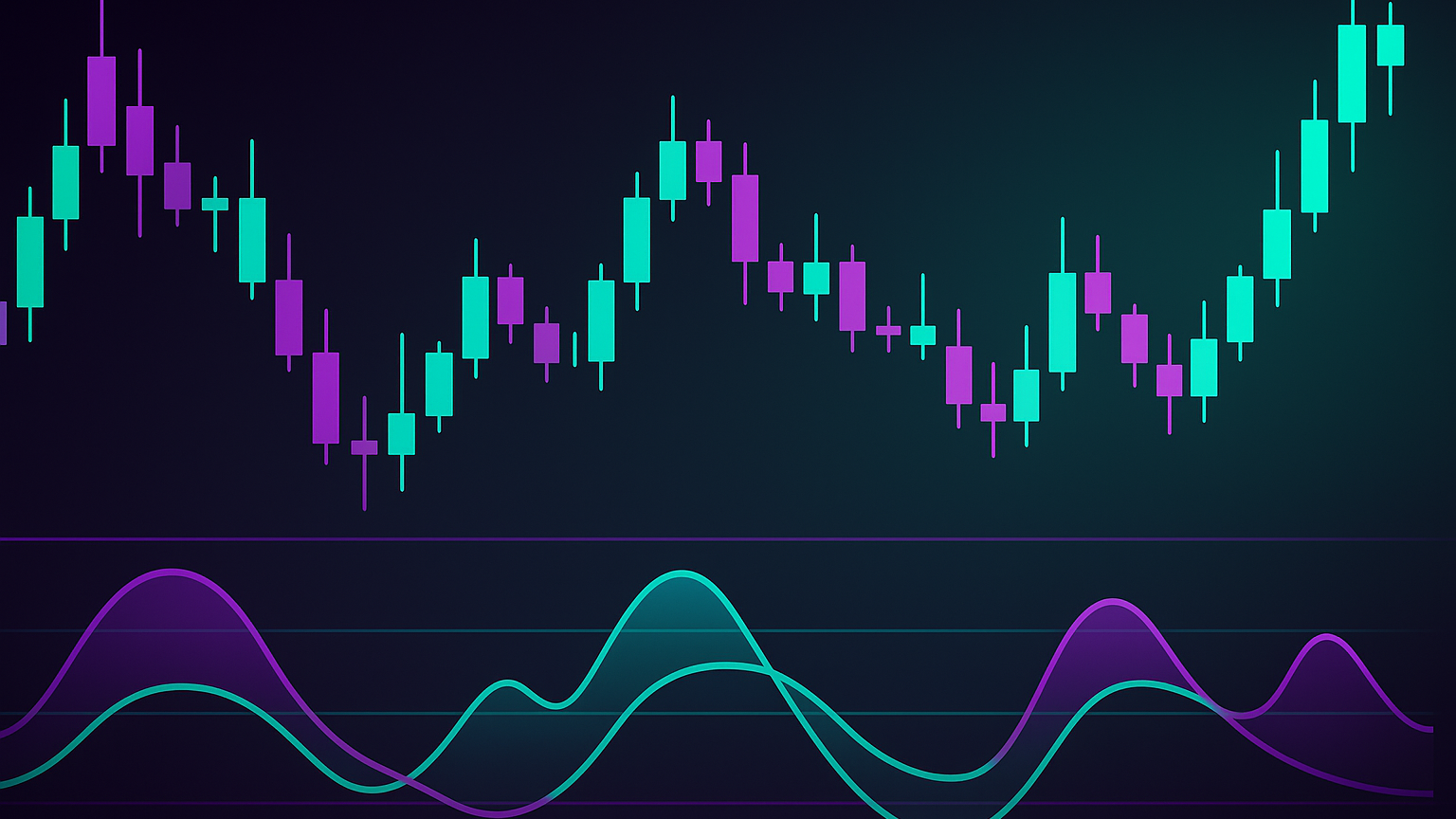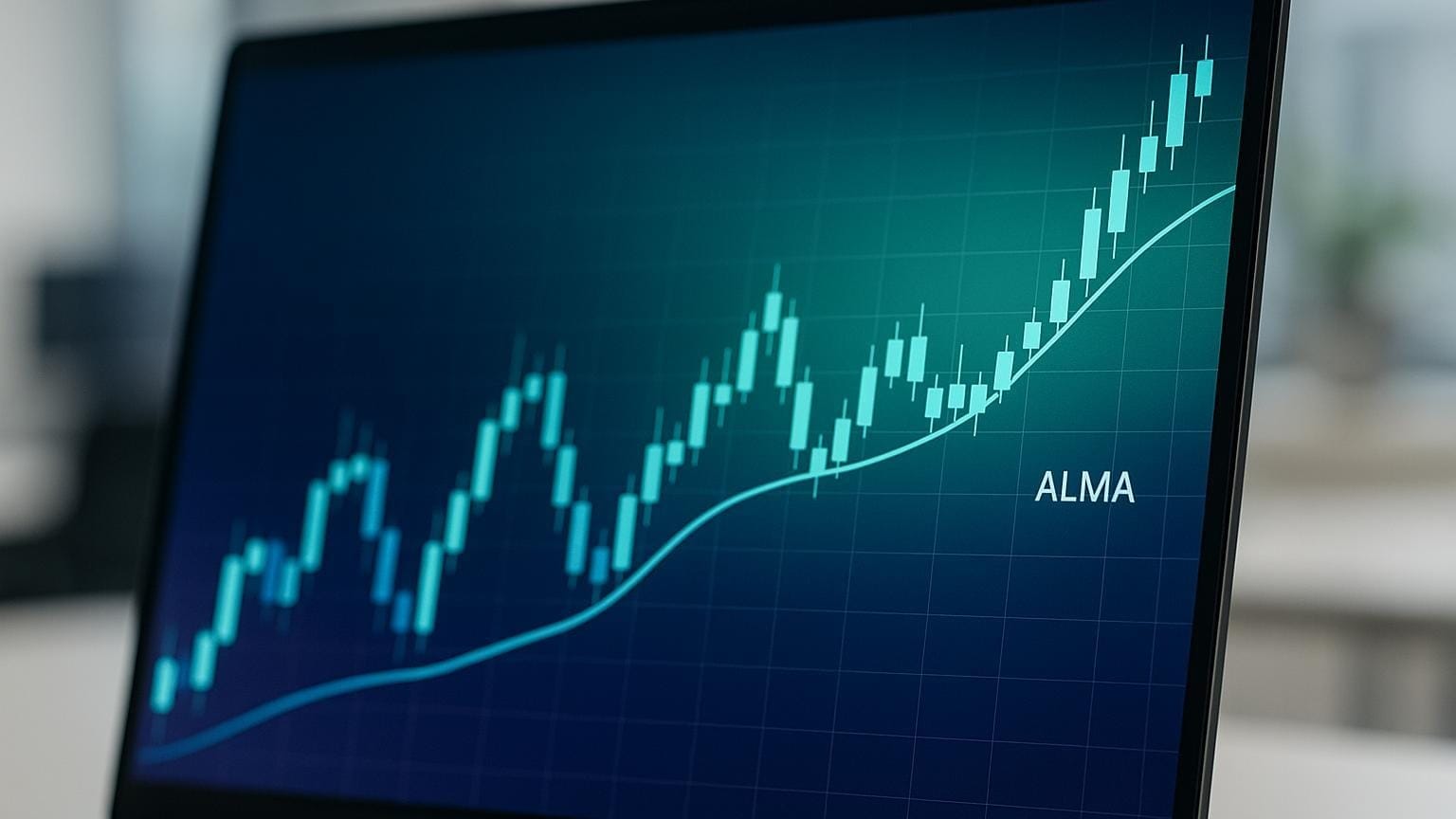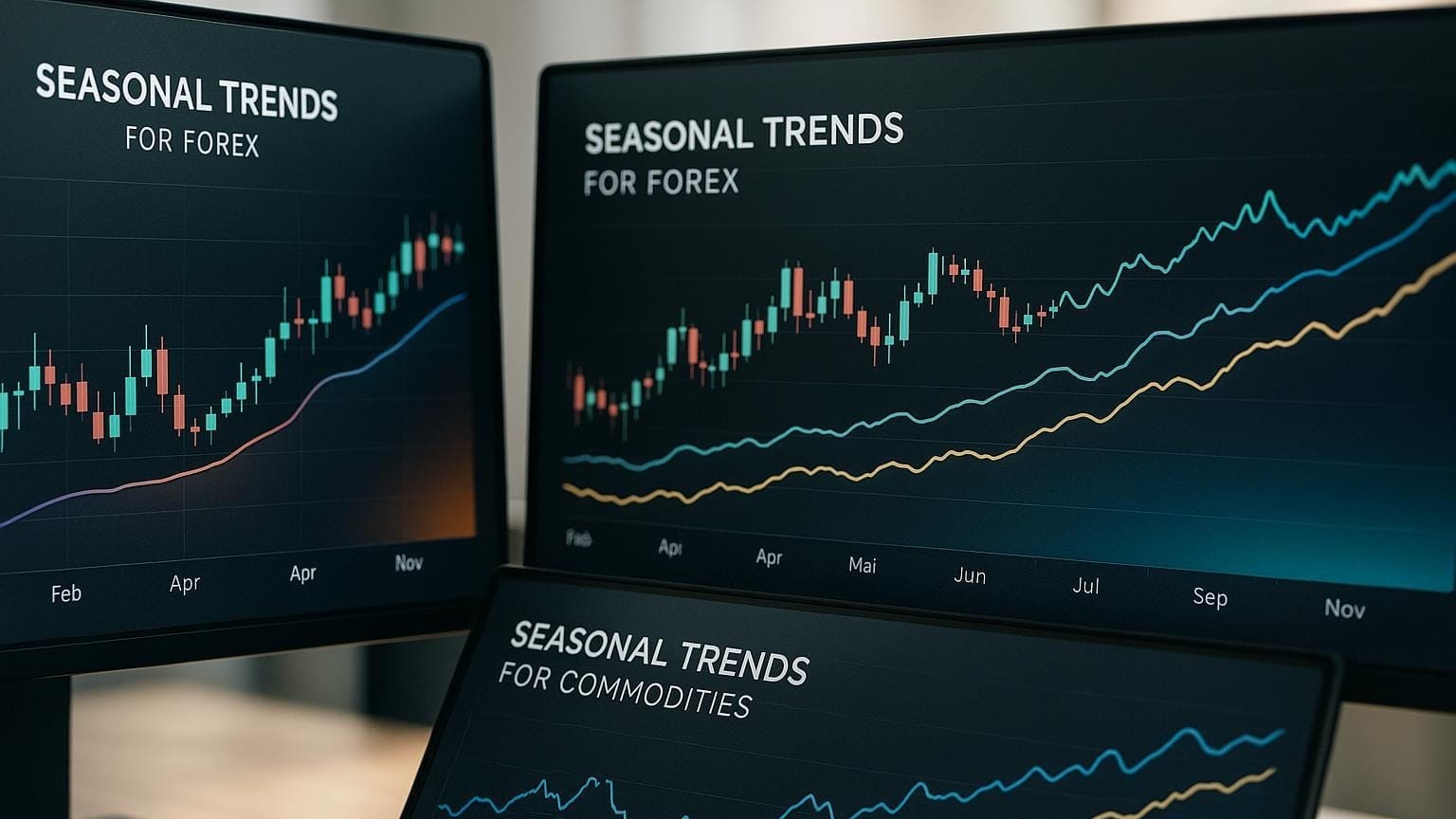Learn how the Relative Vigor Index (RVI) helps gauge market momentum, identify trends, and optimize trading strategies effectively.
The Relative Vigor Index (RVI) is a momentum indicator that helps traders understand market trends by comparing closing and opening prices. Here's what you need to know:
- Purpose: Measures bullish or bearish momentum in the market.
- How It Works: Oscillates around zero; values above zero indicate bullish momentum, below zero indicate bearish momentum.
- Key Features:
- Two lines: Main RVI (green) and Signal Line (red, a 4-period moving average).
- Crossovers between these lines signal potential trend changes.
- Works best in trending markets, less effective in range-bound conditions.
- Usage in Strategies:
- Detect entry/exit points using crossovers and divergences.
- Combine with tools like RSI, moving averages, or Bollinger Bands for better accuracy.
- Multi-timeframe analysis improves reliability.
- Optimization: Adjust period settings and use volatility filters (e.g., ATR) to refine signals.
The RVI is most effective when paired with other technical tools and used in trending markets. Backtesting and disciplined risk management are crucial for success.
How the Relative Vigor Index Works
RVI Calculation Formula
To calculate the Relative Vigor Index (RVI), start by choosing a period to analyze — commonly 10 periods. For each of these periods, you'll need the open, high, low, and close prices. The formula involves two key components: a numerator, calculated as the difference between the close and open prices, and a denominator, which represents the trading range. Both components are smoothed using Simple Moving Averages (SMAs) over the chosen period. Dividing the numerator by the denominator gives you the RVI value. The result is a normalized oscillator, making it easy to compare across different securities and timeframes.
Clarification: in practice, many implementations follow Ehlers’ formulation that applies a 4-bar weighting to recent values, using the pattern 1–2–2–1 on both the (Close − Open) and (High − Low) terms before smoothing with an SMA. The signal line then applies the same 1–2–2–1 weighting to recent RVI values. If you want the full breakdown, see this overview of the Relative Vigor Index calculation.
One key distinction is that, unlike the Stochastic Oscillator, the RVI evaluates the relationship between the close and open prices rather than comparing the close to the range's extremes.
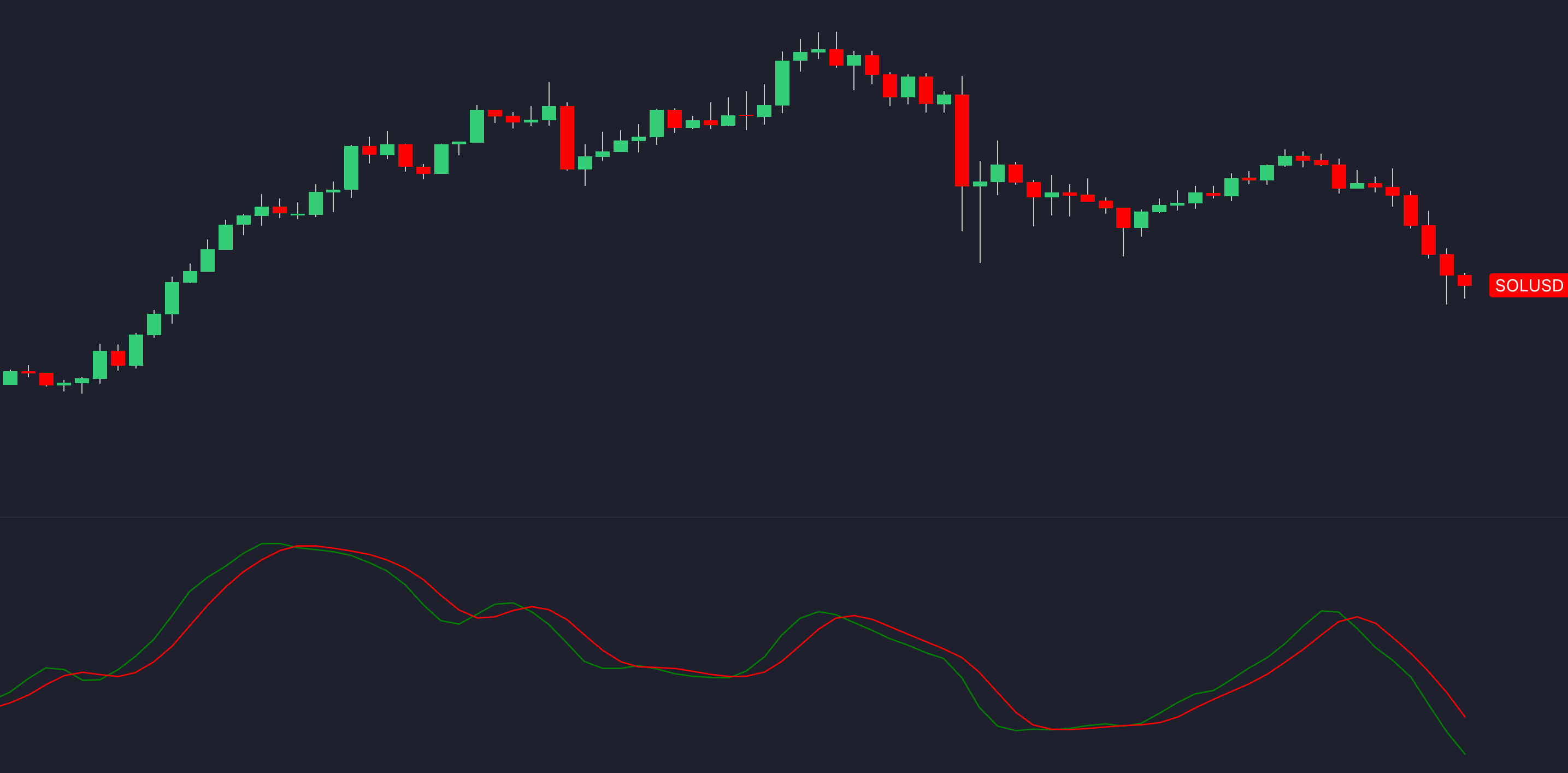
Understanding the Signal Line
The signal line is derived by applying a 4-period SMA to the RVI itself, which helps reduce short-term fluctuations. This smoothing effect causes the signal line to lag slightly behind the main RVI line. Traders often pay attention to the crossovers between these two lines. When the RVI crosses above the signal line, it may signal a potential shift from bearish to bullish momentum. Conversely, when the RVI crosses below the signal line, it could indicate a move from bullish to bearish sentiment. Some trading platforms even call the signal line a "trigger" line, emphasizing its role in generating actionable insights.
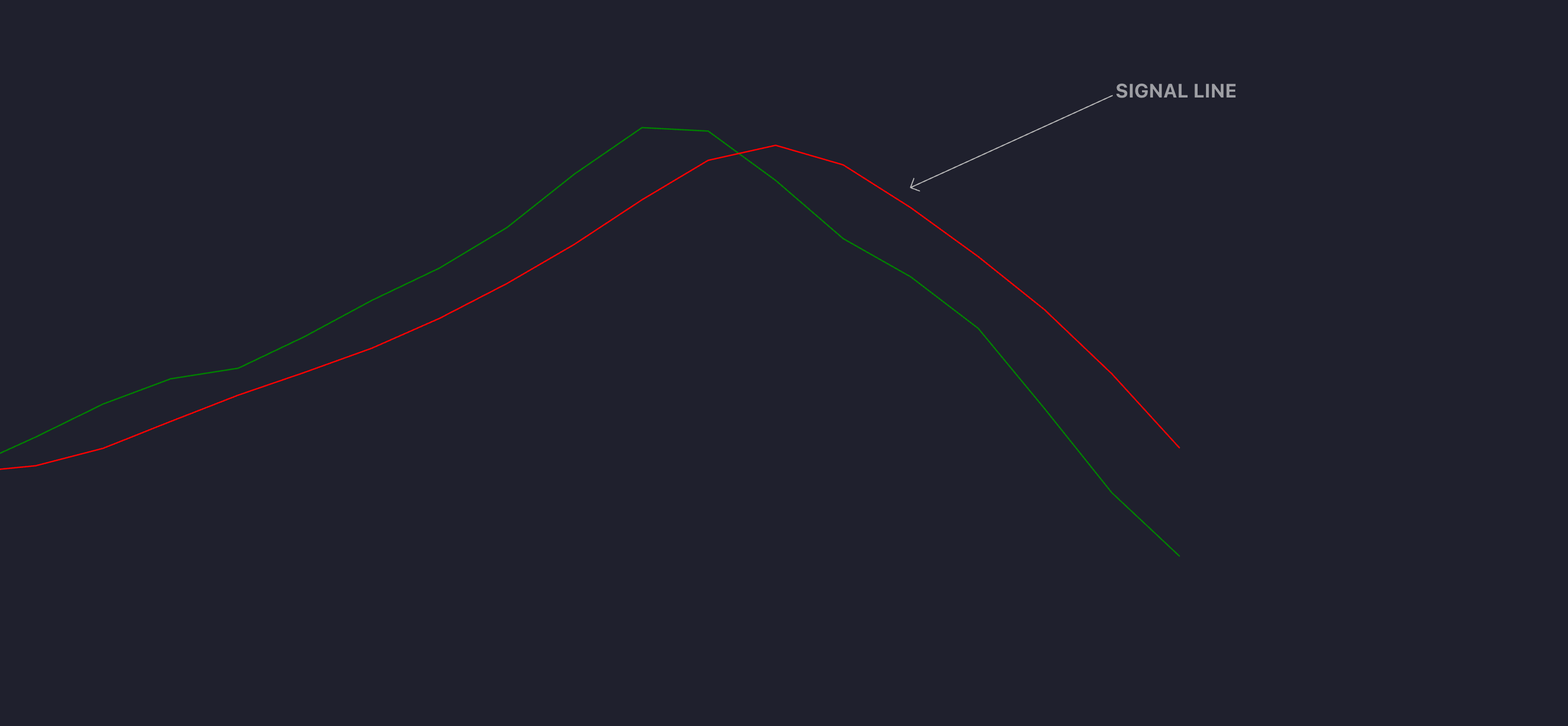
Next, let’s explore how traders interpret these RVI values in the broader context of market trends.
Reading RVI Values
RVI values above zero suggest bullish momentum, while values below zero point to bearish momentum. Extreme readings — around 0.4 or -0.4 — can signal overbought or oversold conditions.
Divergences between the RVI and price movements can also provide valuable clues. For instance, if prices hit new highs but the RVI fails to do the same, it may indicate weakening bullish momentum. Similarly, if prices drop to new lows but the RVI forms higher lows, it could suggest that selling pressure is easing.
The slope of the RVI provides further insights. An upward slope indicates growing momentum, while a downward slope reflects weakening momentum. Steeper slopes generally point to stronger trends. However, the RVI is most effective in trending markets. In rangebound conditions, its signals can sometimes be misleading, so it’s wise to confirm them with other technical tools.
Using RVI in Trading Strategies
RVI Entry and Exit Signals
The Relative Vigor Index (RVI) can provide clear entry and exit signals by monitoring its interaction with the signal line. A crossover above the signal line suggests bullish momentum, signaling a potential long entry. Conversely, a crossover below the signal line indicates bearish momentum, which could be a cue for a short entry.
Divergence is another useful tool for identifying trading opportunities. If prices reach new highs while the RVI trends lower, it may signal weakening momentum, making it a potential short entry. On the flip side, when prices hit new lows but the RVI forms higher lows, it can indicate easing selling pressure, presenting an opportunity for a long entry.
Exit signals follow a similar logic. For instance, traders might close long positions when the RVI crosses below its signal line or exit short positions when the RVI moves above.
Next, let’s look at how combining the RVI with other indicators can enhance trade precision.
Combining RVI with Other Indicators
While the RVI provides valuable signals on its own, combining it with other indicators can help filter false signals and improve trading accuracy.
For example, pairing the RVI with the Relative Strength Index (RSI) can refine entries. A long position might be considered when the RSI shows oversold conditions (below 30) and the RVI confirms a bullish crossover. Similarly, a short position could be taken when the RSI indicates overbought conditions (above 70) and the RVI produces a bearish crossover.
Moving averages are another popular tool for confirmation. A strategy might involve using 9-period and 16-period simple moving averages alongside the RVI. Trades are initiated only when the moving averages cross in the direction of the RVI signal, and positions are exited when the moving averages cross in the opposite direction.
Bollinger Bands can also complement the RVI. For instance, if the RVI signals overbought or oversold conditions, and the price simultaneously crosses the Bollinger Bands' middle line (a 20-period simple moving average) in the same direction, this alignment can serve as a strong entry signal. Exits occur when the price reverses and crosses the middle line in the opposite direction.
Some traders also combine the RVI with oscillators like the Stochastic Oscillator on shorter timeframes. When both indicators show oversold conditions, an RVI bullish crossover can confirm the start of an upward trend. For LuxAlgo-powered momentum workflows, consider pairing RVI concepts with the Oscillator Matrix.
Multi-Timeframe RVI Analysis
Beyond single-timeframe strategies, applying multi-timeframe analysis with the RVI can provide a broader perspective and reduce false signals. By analyzing the RVI across multiple timeframes, traders can better understand overall trends and identify key levels of support, resistance, and consolidation zones. For instance, if you trade on a 15-minute chart, reviewing a higher timeframe, such as the 1-hour or 4-hour chart, can offer valuable insights.
A practical approach involves ensuring alignment between the RVI signals on lower and higher timeframes. For example, if the higher timeframe shows a bullish trend, wait for the lower timeframe RVI to confirm by breaking structure in the same direction. Overlapping support and resistance levels, often called "stacked levels", can highlight areas with high reaction probability. If you prefer automated structure context, explore Price Action Concepts or the Market Structure Oscillator.
Patterns like bullish divergence on the higher timeframe can also add weight to a trade setup. However, patience and discipline are crucial. Avoid forcing trades when signals from different timeframes do not align, as this can lead to unfavorable outcomes.
RVI Optimization Techniques
Adjusting RVI Period Settings
Fine-tuning the RVI period settings is an important step in aligning the indicator with your trading approach. The default RVI period is set at 10, but tweaking this value can make it more suitable for your trading style and the prevailing market conditions. A shorter period increases the RVI’s sensitivity, resulting in quicker and more frequent signals. However, this heightened responsiveness comes with a tradeoff — it may produce false alerts, especially in volatile markets.
On the other hand, using a longer period smooths out the RVI by filtering out short-term fluctuations. This approach is often preferred by traders with a longer-term perspective, as it highlights more meaningful momentum shifts while reducing noise.
For those new to adjusting the RVI, starting with daily charts is typically recommended. The daily timeframe offers a reliable foundation for analysis. Once comfortable, you can experiment with shorter timeframes. Keep in mind that market conditions heavily influence the ideal period setting. While trending markets often align well with the RVI, range-bound markets can lead to misleading signals, regardless of the settings. In highly volatile conditions, longer periods are generally more effective at reducing noise, whereas stable trending markets may benefit from shorter, more responsive settings.
Filtering RVI Signals with Volatility
Since the RVI tends to react to short-term trends, it can sometimes generate inaccurate signals in highly volatile markets. Incorporating volatility filters can help improve the reliability of these signals. One effective tool for this purpose is the Average True Range (ATR). When ATR readings indicate heightened volatility, it’s wise to wait for additional confirmation before acting on an RVI signal. Conversely, during periods of low volatility, RVI signals are often more dependable.
Other indicators, such as volume and moving averages, can further refine signal accuracy. For example, if a bullish RVI crossover occurs while trading volume is declining, the signal may lack strength. Similarly, if prices are hovering around key moving averages within a narrow range, an RVI crossover may not indicate a significant market move. Tools like Keltner Channels can provide a smoother view of volatility compared to Bollinger Bands; see our overview on band indicators and volatility for context.
Backtesting RVI Strategies
Backtesting is an essential step to evaluate the reliability of RVI-based strategies using historical data. Testing your RVI settings across different market cycles ensures that your strategy is robust and accounts for varying conditions. Be sure to include trading costs — such as fees, commissions, and realistic spreads — to simulate real-world trading scenarios.
Analyzing performance metrics during backtesting can provide valuable insights. For instance, tracking the average number of bars a trade is held can help determine if a high-frequency approach is feasible. Metrics like the average gain/loss and the win-to-loss ratio can guide position sizing, while limiting exposure to less than 70% helps maintain sound risk management. It’s also critical to customize backtesting to reflect the specific conditions of your broker.
Avoid over-optimizing your strategy to fit past data too perfectly, as this can reduce its effectiveness in live trading. Instead, after thorough backtesting, consider paper trading your system in real-time market conditions. This step allows you to verify its performance before committing actual capital. To explore rapid strategy discovery, try AI Backtesting on luxalgo.com and see the Fetching Strategies guide for tips on building RVI-based logic with Signals & Overlays, Price Action Concepts, and Oscillator Matrix.
These techniques provide a practical framework for making the most of RVI signals and ensuring they align with your trading goals.
Key Takeaways and Conclusion
Main Points About RVI
The Relative Vigor Index (RVI) proves to be a helpful tool when used as part of a broader trading strategy. This momentum indicator works across various markets, whether you're dealing with stocks, commodities, or currencies. Its key strength lies in analyzing momentum oscillations, which helps traders filter out false signals and spot potential trend shifts early.
As Tyler Corvin, Senior Trader, puts it:
"The RVI helps traders figure out the best time to buy or sell. It's designed to spot hidden changes in market energy before prices move too much. If you know how to read it, the RVI can give you a heads-up about what a stock or option might do next."
What makes the RVI especially practical is its visual representation of trend strength compared to past patterns. This feature helps traders quickly gauge whether a trend is strengthening or weakening. However, like any tool, it has its limitations. The RVI tends to work best in trending markets but can produce misleading signals in range-bound conditions. Additionally, its reliance on moving averages may lead to delayed signals in highly volatile periods. To improve its reliability, traders often pair the RVI with other technical tools, which can enhance confidence in their trading decisions. For integrated systems on TradingView, explore Signals & Overlays, Price Action Concepts, and Oscillator Matrix.
Final Thoughts on RVI Trading
The RVI offers a unique perspective on market momentum. Earlier backtests, like the 0.44% average gain per trade with a 51% win rate in gold (GLD) trading, show its potential. But the true value of the RVI becomes apparent when it's integrated into a comprehensive trading strategy.
To get the most out of the RVI, it's important to understand both its strengths and its limits. While it excels at identifying divergences and crossover signals that hint at trend reversals, it shouldn’t be relied upon in isolation. Experienced traders often combine RVI insights with tools like volume analysis, volatility measures, or other momentum indicators to create a well-rounded approach.
As you begin using the RVI, focus on refining your methods. Experiment with different period settings, test strategies in various market environments, and validate your results through backtesting before committing real capital. The RVI’s flexibility across trading styles and timeframes makes it a valuable addition to your toolkit. Combined with disciplined risk management, it can improve your timing and decision-making in the markets.
Relative Vigor Index Trading Strategy [Full Logic + Backtest]
FAQs
How does the Relative Vigor Index (RVI) compare to indicators like RSI or Stochastic Oscillator for analyzing market trends?
The Relative Vigor Index (RVI) is a momentum-based tool that measures the strength of a trend by comparing the closing price to the trading range. This indicator oscillates around a central line, making it easier for traders to spot bullish or bearish momentum. When the RVI is above the centerline, it signals upward momentum, while readings below indicate downward momentum.
When stacked against the Relative Strength Index (RSI) and the Stochastic Oscillator, the RVI shines in trending markets. The RSI is often the go-to for identifying overbought or oversold conditions, and the Stochastic Oscillator excels in sideways or range-bound markets. The RVI bridges the gap by blending traits of both, making it a flexible choice for various market scenarios. That said, it tends to lag slightly behind the RSI in fast-moving markets due to the way it’s calculated.
What are some simple tips for beginners to backtest trading strategies using the Relative Vigor Index (RVI)?
To backtest trading strategies using the Relative Vigor Index (RVI) effectively, beginners can follow these practical steps:
- Start with manual backtesting: Automated tools can save time, but manually reviewing historical data helps you understand how the RVI performs under various market conditions. If you're working with longer timeframes like daily or 4-hour charts, test at least 1–2 years of data. For shorter timeframes, such as 1-minute or 5-minute charts, focus on 3–6 months of historical data.
- Limit your focus to a few assets: Instead of spreading your efforts across multiple assets or currency pairs, concentrate on 1–2. This approach allows you to evaluate the RVI's performance in specific markets without overwhelming yourself.
- Keep detailed records: Document every part of your backtesting process, including entry and exit points, stop-loss levels, and overall outcomes. Reviewing these notes regularly can help you spot trends and fine-tune your strategy.
By sticking to these methods, you'll develop a clearer understanding of how the RVI works and how it can enhance your trading decisions.
When can the Relative Vigor Index (RVI) give inaccurate signals, and how can traders handle this in sideways markets?
The Relative Vigor Index (RVI) can sometimes fall short in sideways or range-bound markets. Since it's designed to spot momentum in trending conditions, it may signal bullish or bearish trends that never actually materialize. This can lead to misguided trading decisions.
To work around this limitation, traders might consider using a longer lookback period when calculating the RVI. This approach helps to smooth out short-term fluctuations, reducing the likelihood of false signals. Another effective strategy is combining the RVI with other tools, such as moving averages or volume indicators. These additional layers of analysis can help confirm trends and make the signals more dependable before taking action.
References
- Understanding Moving Averages and How Traders Use Them
- Bollinger Bands Strategy: Squeeze then Surge
- All-Time High (ATH) Levels
- Exit Conditions | Backtester (S&O)
- Support & Resistance Dynamic
- AI Backtesting Assistant
- AI Backtesting Assistant: Fetching Strategies
- Oscillator Matrix™
- Signals & Overlays™
- Price Action Concepts™
- Reversal Signals
- Volumetric Toolkit
- Liquidation Levels
- Ultimate RSI
- Market Structure Oscillator


